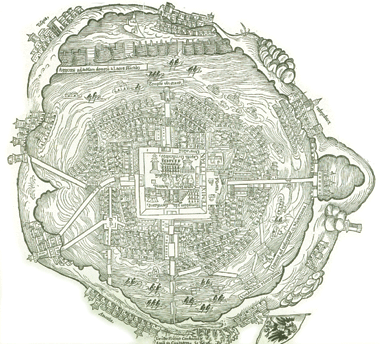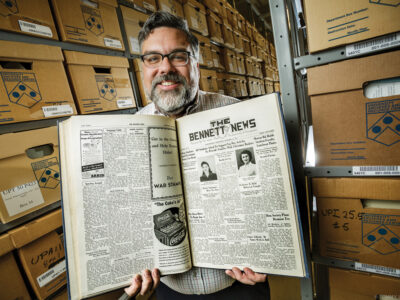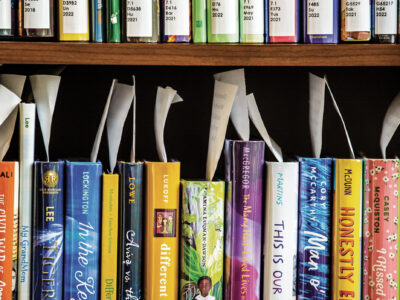
Class of ’43 | It would take a lot more time to explore the remarkable collection of early American rarities that Jay Kislak W’43 recently donated to the Library of Congress than it took Christopher Columbus to sail to the New World and back. But although the Kislak Collection is vast, what distinguishes it is the quality and uniqueness of the individual items—such as:
• Two of the earliest printings (1493 and 1494) of Columbus’ letter announcing his journey to the New World.
• The 1516 Carta Marina, the earliest known printed nautical chart of the world by the noted German cartographer Martin Waldseemuller, as well as his 1507 Cosmographiae Introductio, in which he suggested that the newly discovered lands should be named America.
• First editions of the works of Bartolomé de Las Casas, the Spanish priest and defender of Indian rights in the early 16th century.
• René de Laudonnier’s 1586 L’Histoire Notable de la Floride, which describes the first French settlement near present-day St. Augustine.
• “The Conquest of Mexico,” a series of eight large mural paintings from the 17th century depicting the story of Cortes’ entry into Mexico, 1519-1522.
• George Washington’s 1762 diary, written on the blank pages of a Virginia almanac, along with other letters and personal documents of Washington and his wife, Martha.
Those and more than 4,000 other rare books, maps, manuscripts, documents, pre-Columbian artifacts, and colonial art from North and South America make up the collection of Kislak and his wife, Jean, which the couple donated last year to the Library of Congress. (The Kislaks have hung onto a significant number of pre-Columbian artifacts, which are on display at the Kislak Foundation’s gallery in Miami Lakes, Florida.)
The mission of the collection—which will have its own exhibition and research areas in the Library’s Thomas Jefferson Building—is “to foster greater understanding of the cultures and history of the Americas.” And as Kislak points out, there are some large gaps in our understanding of that history and those cultures.
“All those of us who grew up in the Northeast thought the world began the year the Mayflower came over and landed at Plymouth Rock,” he says. “A few years earlier, [English settlers] came to Jamestown. But a hundred years earlier, the Spanish came to St. Augustine, and the year before that the French came to what is now Jacksonville.”
Kislak’s fascination with his subject matter is evident in the historical details he sprinkles throughout his conversation, and it has lasted for more than four decades. “I became involved in collecting books 40-odd years ago,” he recalls, “and when we ran out of space, we had to become particular in what we bought. I needed to specialize. After I moved to Florida, I started collecting anything I could about Florida, the Caribbean, Meso-America. And as we acquired more, we found that Florida, for the Spanish then, was everything north of the Gulf of Mexico. That’s how we got started, and the further we got in we found that a lot of very intriguing things went on long before Plymouth Rock and Jamestown.”
“Over a period of many years Jay Kislak and his staff built a truly remarkable collection of books and manuscripts documenting the exploration and appropriation of the Americas by Europeans,” says Dr. Michael Ryan, head of Penn’s Rare Books and Manuscripts division. “It was one of the strongest and most intelligent collections of its type in private hands that I had seen, and I can only envy the Library of Congress their most recent major acquisition.”
“The Kislak Collection represents a lifetime of collecting informed by passion and intellect,” adds James H. Billington, Librarian of Congress. “Jay Kislak understands the individual and collective significance of these objects, as well as their research and cultural value, and he successfully amassed a unique collection that would be impossible to assemble today.”
Seven years ago, Penn’s Library mounted an exhibition of items selected from the Kislak Collection, titled, “Cultural Readings: Spanish Representations of the New World,” and there were some discussions about the collection coming to Penn. “We still may do something with Penn,” Kislak says, though the bulk of the collection is now in the Library of Congress.
“It would have been a fantastic acquisition for Penn—a great fit with existing collections and with academic programs,” sighs Michael Ryan. “But it is now part of the national patrimony, so that is probably not a bad outcome at all!”—S.H.




